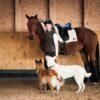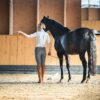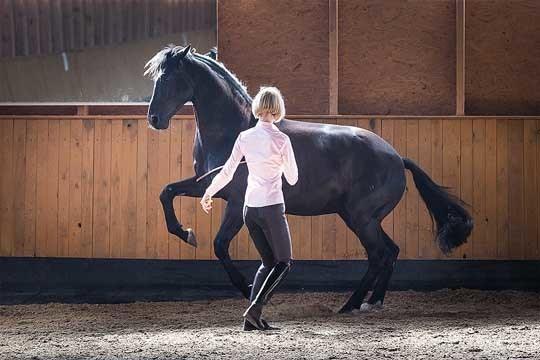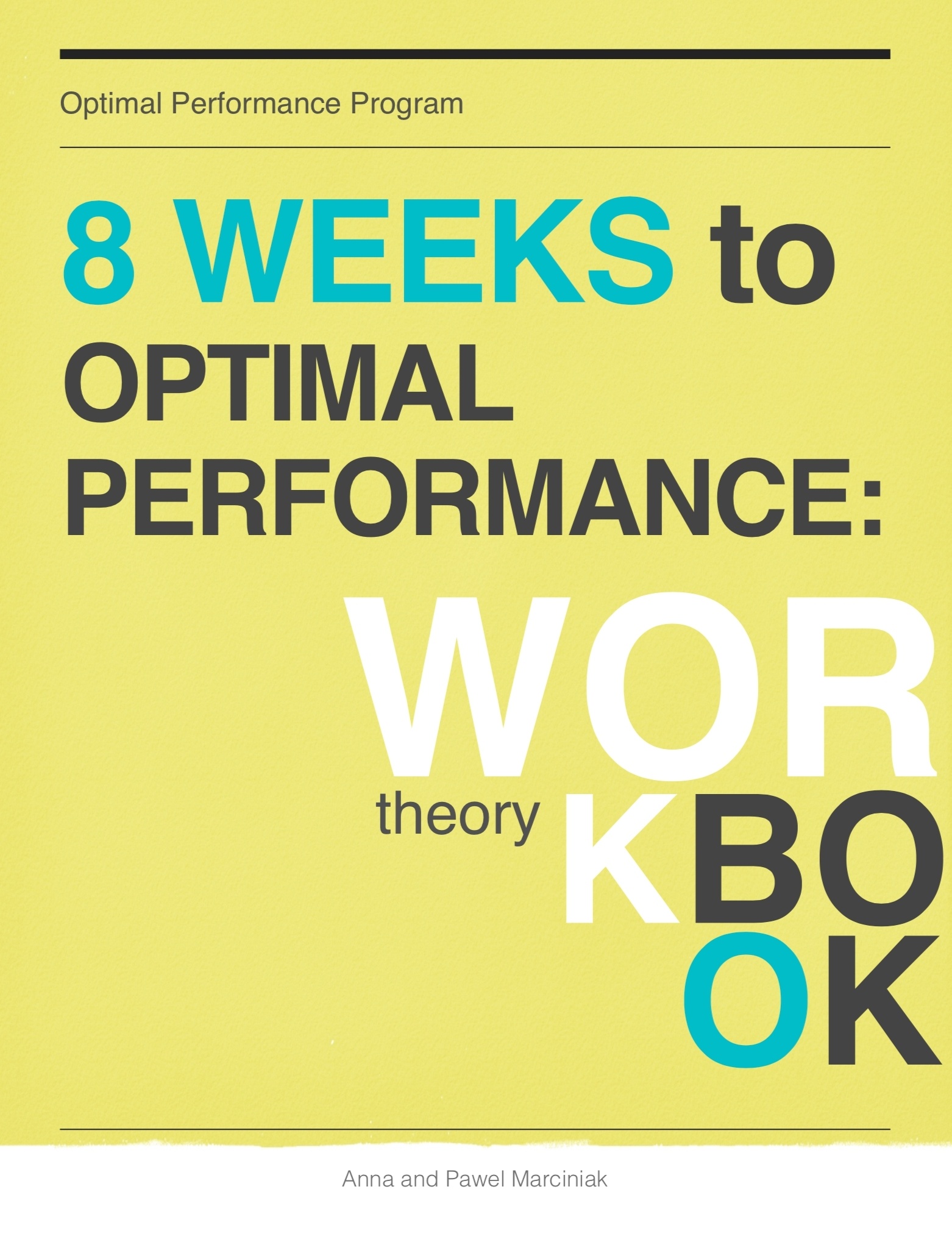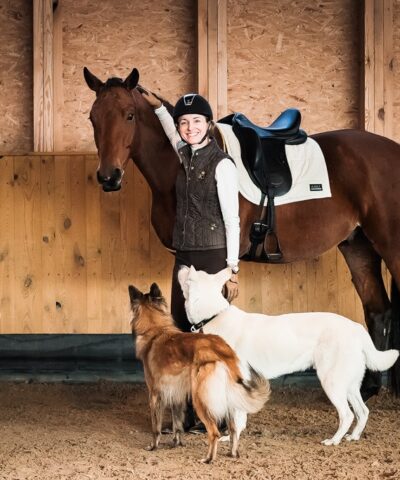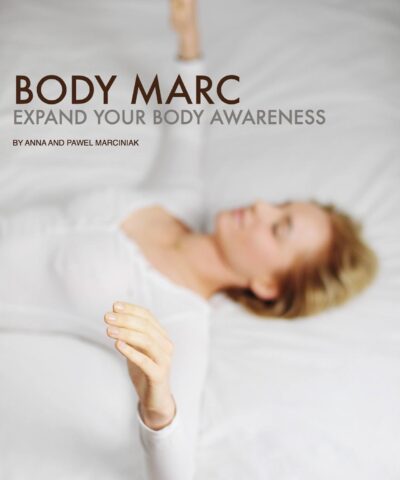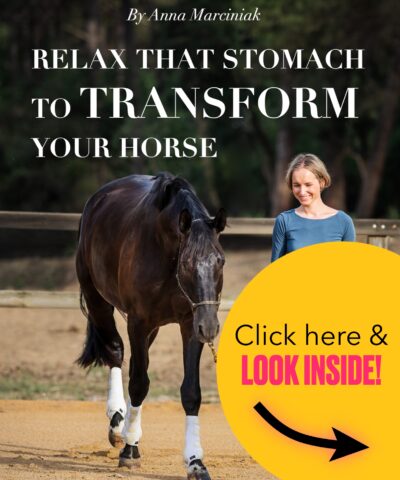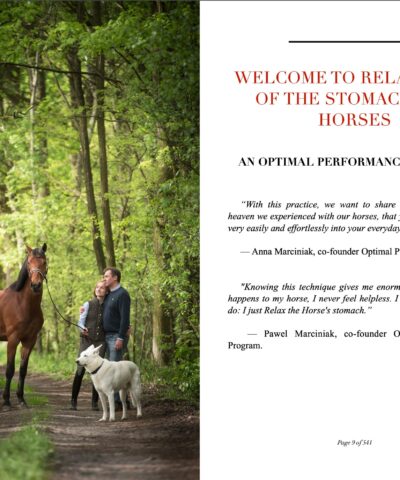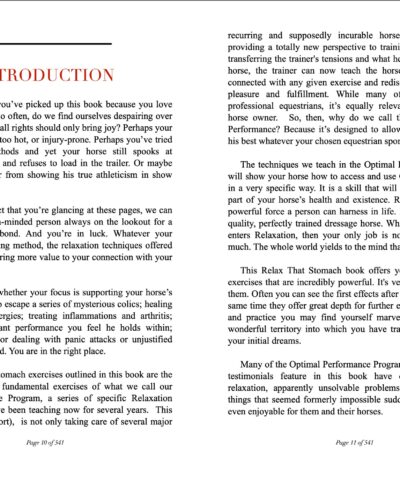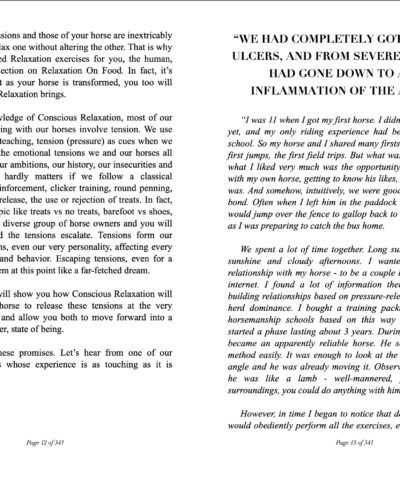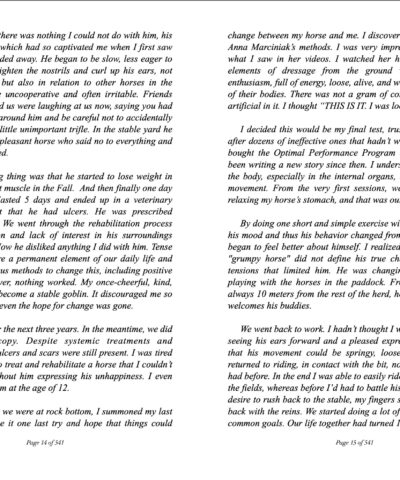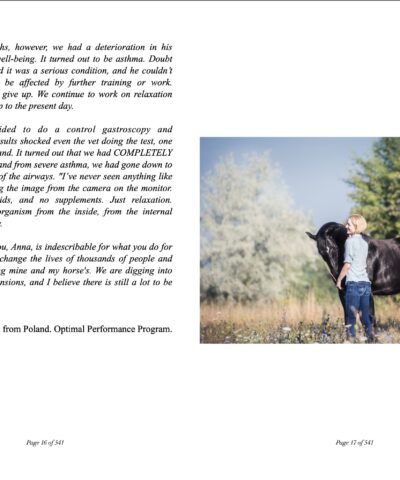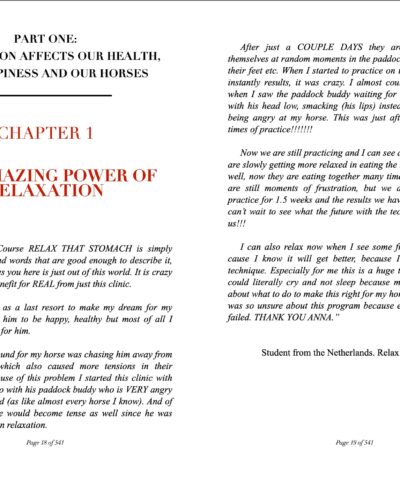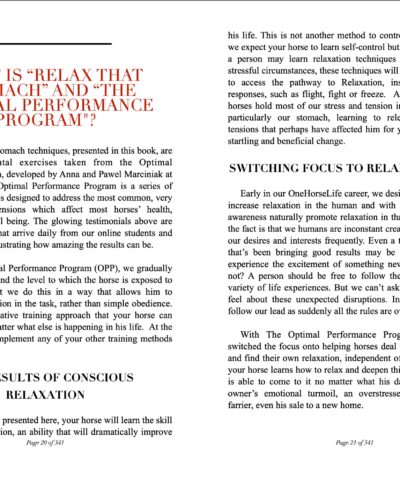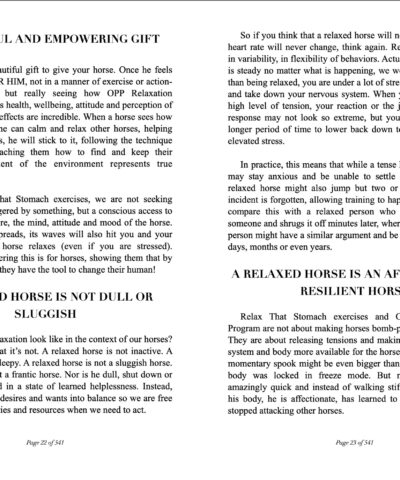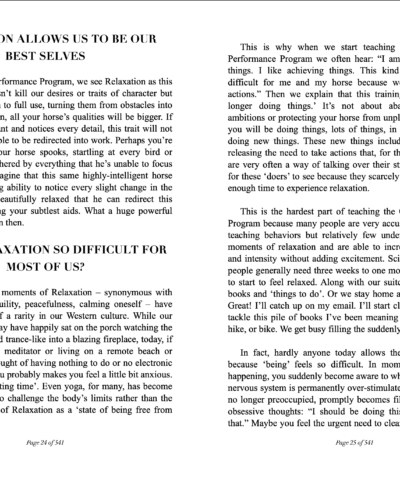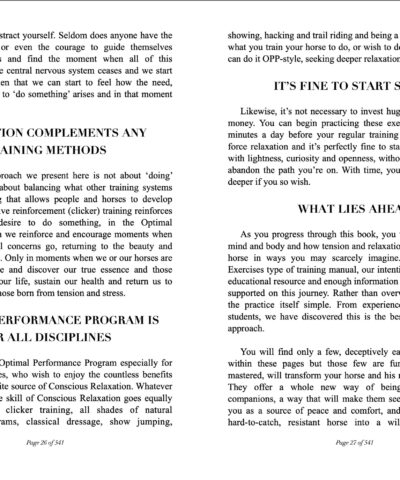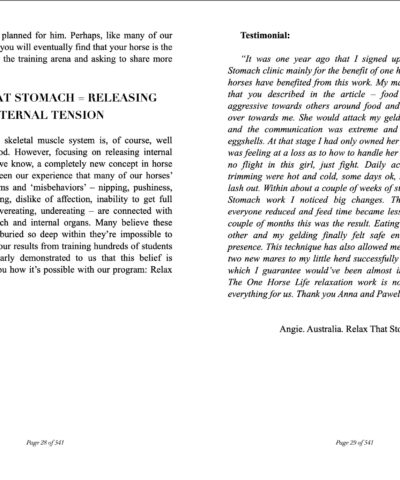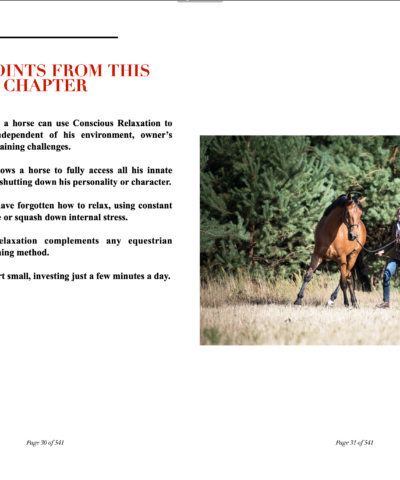Description
Optimal Performance Program: Self-Study
The Optimal Performance Program (OPP) is not just another training method or horsemanship trend that you try for a season and then abandon in search of “the one.” It is also not a path that excludes or discriminates against other approaches you may already be using.
Instead, OPP is a new way of doing things: a methodical, structured path that teaches your horse how to Consciously Relax before, during, and after every action. Through this program, you will guide your horse to discover and access his own innate Relaxation Technique—a natural ability every horse has, but very few can consciously use.
Think of it like yoga or meditation: you first learn in a quiet, controlled space, and then, as you progress, you practice in more challenging environments. Your horse will learn to stay relaxed, regardless of distractions, restrictions, or elevated heart rate—transforming relaxation into his natural “default state.”
If you’ve found your way here, it means you are deeply interested in the relaxation of your horse. And you are right to be: relaxation is the most powerful force in life. Once a horse learns to truly relax, all that remains for the trainer is not to disturb it. After all, the whole world yields to a mind at peace.
Why Relaxation Changes Everything
Maybe you are here because you want to:
-
Improve your horse’s performance and let him shine in competition.
-
Unlock natural energy and free-flowing gaits.
-
Support him in anxiety-prone situations and calm him during daily life.
-
Help him feel more self-aware, confident, and connected.
No matter your reason, relaxation is the gateway. A relaxed horse can learn, perform, and enjoy life with you. A tense horse cannot.
Many riders believe their horses dislike training, riding, or even human interaction. But the truth is simpler: horses love these activities—provided they can stay deeply relaxed while doing them. Without relaxation, the arena feels like a prison, and the saddle becomes a burden. With relaxation, training becomes joy.
Tensions as “Outfits”
Imagine tensions as outfits: pajamas, yoga pants, a suit, or a tight ball gown. Just like people dress differently for different occasions, a horse’s body “dresses up” in tension patterns depending on context:
-
Paddock → Pajamas
-
Grooming → Yoga outfit
-
Training arena → Suit or ball gown
-
Competition environment → Suit with a tight tie, or corset-like ball dress
If your horse was first introduced to saddling or arena work in a tense way, his body remembers. Every time he returns, he “dresses” in that same tension pattern—believing it’s necessary for survival.
And just like you wouldn’t wear pajamas to a job interview, your horse believes he cannot show up relaxed in certain situations. Standard training rarely changes this belief, because the body is convinced it needs tension to cope.
The Optimal Performance Program rewrites that dress code. It teaches your horse that there is only one outfit suitable for every situation in life: Deep Muscle Relaxation.
What Makes OPP Unique
-
It is not a new whip technique, a flag instead of a stick, or another variation of positive reinforcement.
- It is not a groundwork pattern aimed at “triggering” your horse’s release.
-
It is not about treats or the absence of them, and it’s not a “spiritual” approach.
-
Instead, it is a systematic way of teaching the horse’s body to wear a new outfit for every situation — Relaxation.
Through carefully designed process we create context in which your horse clearly learns to replace old tension patterns with new relaxation patterns through the process of self-discovery, conscious relaxation and expanded body awareness. Over time, relaxation becomes his default response to any challenge: whether competing, loading into a trailer, or simply being groomed.
The Structure of the Program
You will learn eight Relaxation Patterns, each addressing one of the six major daily tensions horses experience, plus additional contexts. You’ll discover how to use Deep Muscle Relaxation to transform movement patterns, laying the foundation for balanced, supple, and powerful motion.
After that, you’ll learn how to combine relaxation patterns like puzzle pieces to build complex behaviours, re-write pre-conditioned behavioural responses and re-wire your horse’s Central Nervous System for a new default response — Relaxation. You will learn how to integrate OPP seamlessly with any training method, from high-performance dressage to natural horsemanship.
Week-by-Week Overview:
-
Weeks 1–2: Developing the Relaxation Technique
Teach your horse to notice tension and release it, turning spontaneous relaxation into a conscious, repeatable skill. -
Week 3-5: Relaxation on Food Restriction
For horses who eat too fast, too little, or are trained with/without treats. Essential for every horse. -
Week 6-8: Relaxation on Distractions
Help your horse notice everything around him without losing focus or becoming distressed. -
Week 9-11: Relaxation on Orders
Teach your horse to accept guidance calmly, without wasting energy resisting or doubting. -
Week 12-14: Relaxation on Movement Restrictions
Reduce fear and panic by teaching your horse to release tension when restricted, instead of bracing against it. -
Week 15-17: Relaxation on Difficulties
Transform the horse’s response to challenging tasks—relaxation deepens as difficulty increases. -
Week 18-20: Relaxation on Elevated Heart Rate
Teach your horse to stay relaxed while moving energetically, a hallmark of top-level athletes. -
Week 21-23: Changing Movement Patterns
Redefine how your horse moves, using relaxation as the key to lasting biomechanical change.
The Outcome
At the end of the Optimal Performance Program, your horse will know how to choose Deep Muscle Relaxation as his natural state, no matter the situation. This means:
-
Better performance, without added stress.
-
More energy, because it isn’t wasted on bracing.
-
A healthier body, free from chronic tension patterns.
-
A deeper, more joyful partnership with you.
The OPP is the only program that shows horses how to take off their “ball gown” of tension and put on the comfortable outfit of relaxation — forever.
